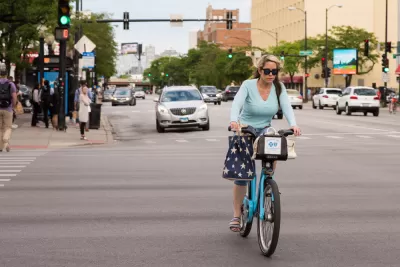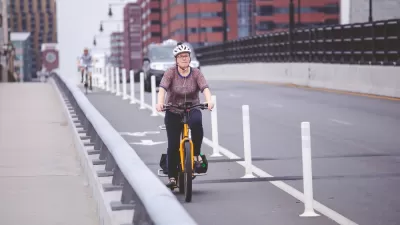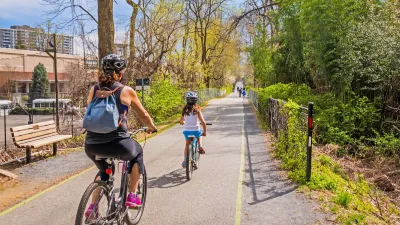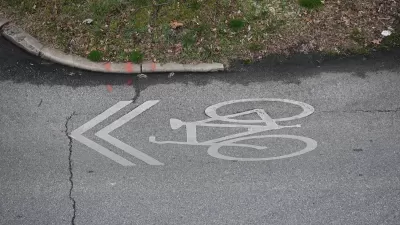New research indicates a positive association between overall cycling levels and ridership rates for women-identified riders.

A new study reveals that "cities that do the best job of catering to the needs of women cyclists also have the highest level of cycling overall," reports Kea Wilson for Streetsblog. "In a comprehensive analysis of travel surveys from 11 countries across the globe, a team of international researchers found that the United States ranked second-to-last for both cycling mode share overall, and for cycling mode share specifically among women-identified riders."
The study also found "a strong positive association between the level of cycling and women’s representation among cyclists." In areas where cycling mode share was more than 7 percent, "women made as many cycle trips as men, and sometimes even greater." The research suggests that "when communities make transportation choices that successfully encourage women to ride, everyone comes out to join them."
The report also referenced "the many ways that women’s unique transportation needs shape their experience on two wheels — and not just their need for safety from drivers. Women are not only less likely to ride on dangerous roads with little protected infrastructure than their male counterparts, but that they take shorter trips by bike and travel more often for reasons unrelated to a traditional work commute, like running household errands." Despite women outnumbering men by 400,000 in New York City's population, the city—which has the highest share of women riders of the American cities surveyed—"still had a 66-percent male ridership."
The study's results indicate that "the presence of diverse women on bikes is the single best indicator of a healthy cycling ecosystem."
FULL STORY: Study: Cycling Rates Low Unless Women Are Riding

Maui's Vacation Rental Debate Turns Ugly
Verbal attacks, misinformation campaigns and fistfights plague a high-stakes debate to convert thousands of vacation rentals into long-term housing.

Planetizen Federal Action Tracker
A weekly monitor of how Trump’s orders and actions are impacting planners and planning in America.

In Urban Planning, AI Prompting Could be the New Design Thinking
Creativity has long been key to great urban design. What if we see AI as our new creative partner?

King County Supportive Housing Program Offers Hope for Unhoused Residents
The county is taking a ‘Housing First’ approach that prioritizes getting people into housing, then offering wraparound supportive services.

Researchers Use AI to Get Clearer Picture of US Housing
Analysts are using artificial intelligence to supercharge their research by allowing them to comb through data faster. Though these AI tools can be error prone, they save time and housing researchers are optimistic about the future.

Making Shared Micromobility More Inclusive
Cities and shared mobility system operators can do more to include people with disabilities in planning and operations, per a new report.
Urban Design for Planners 1: Software Tools
This six-course series explores essential urban design concepts using open source software and equips planners with the tools they need to participate fully in the urban design process.
Planning for Universal Design
Learn the tools for implementing Universal Design in planning regulations.
planning NEXT
Appalachian Highlands Housing Partners
Mpact (founded as Rail~Volution)
City of Camden Redevelopment Agency
City of Astoria
City of Portland
City of Laramie





























